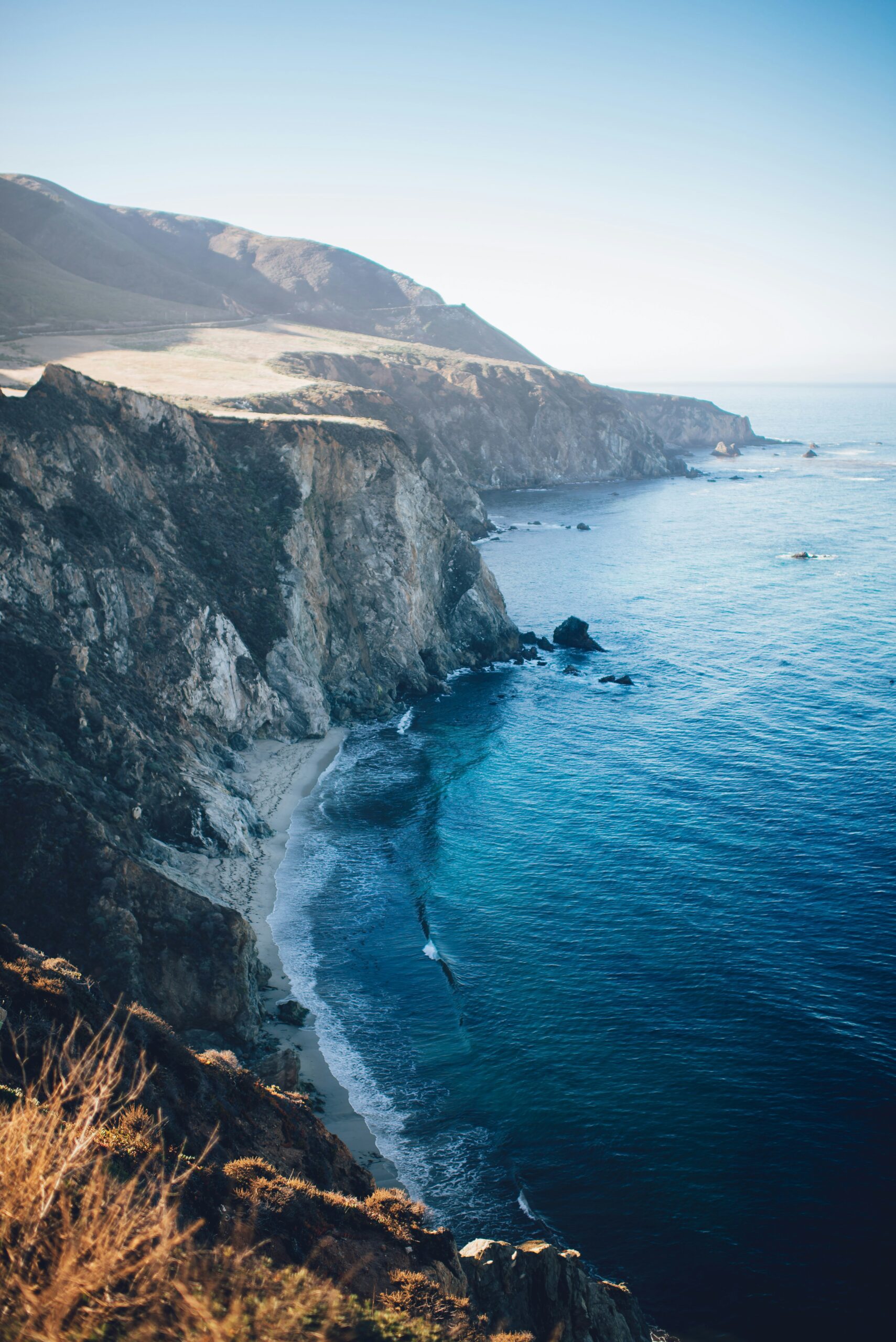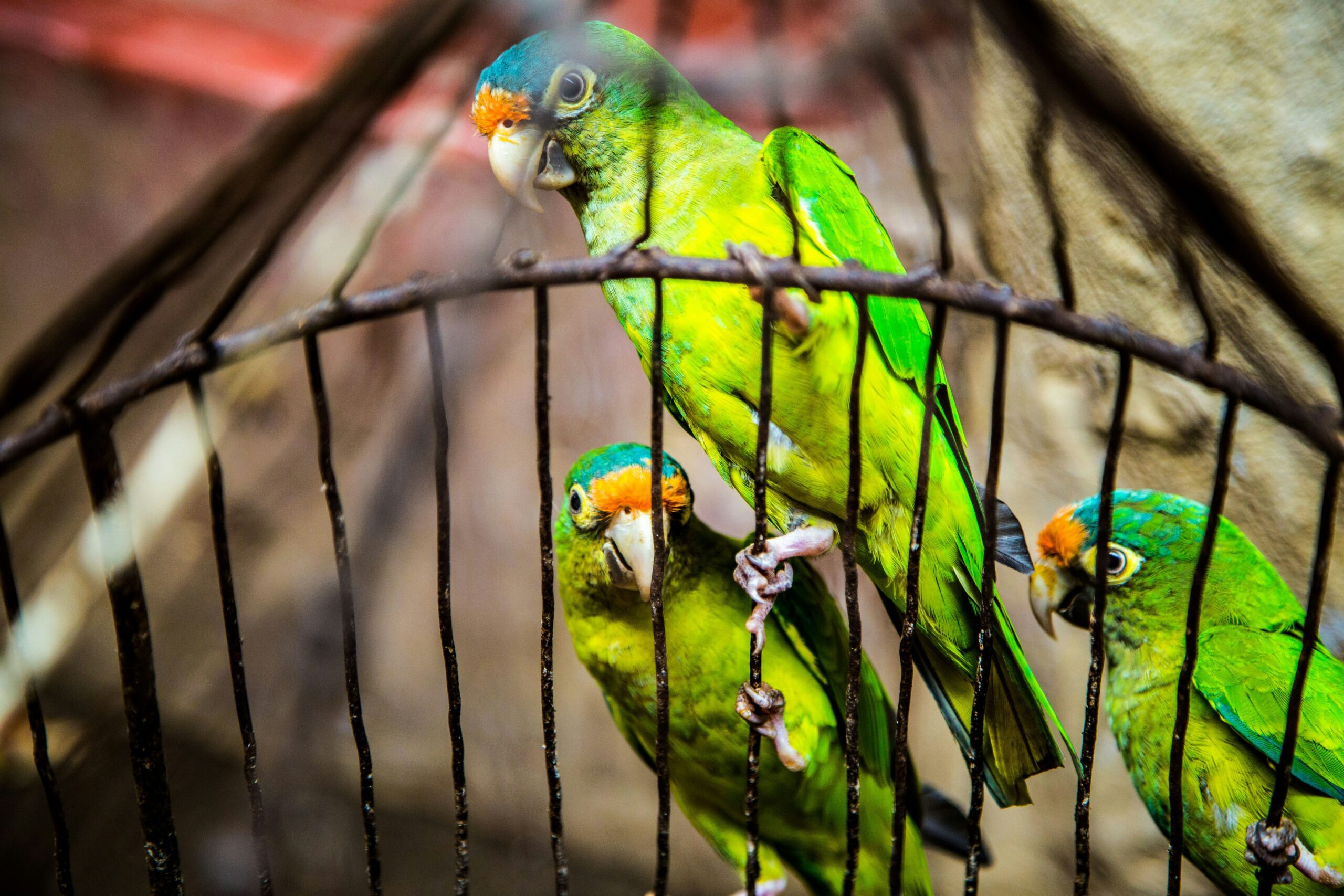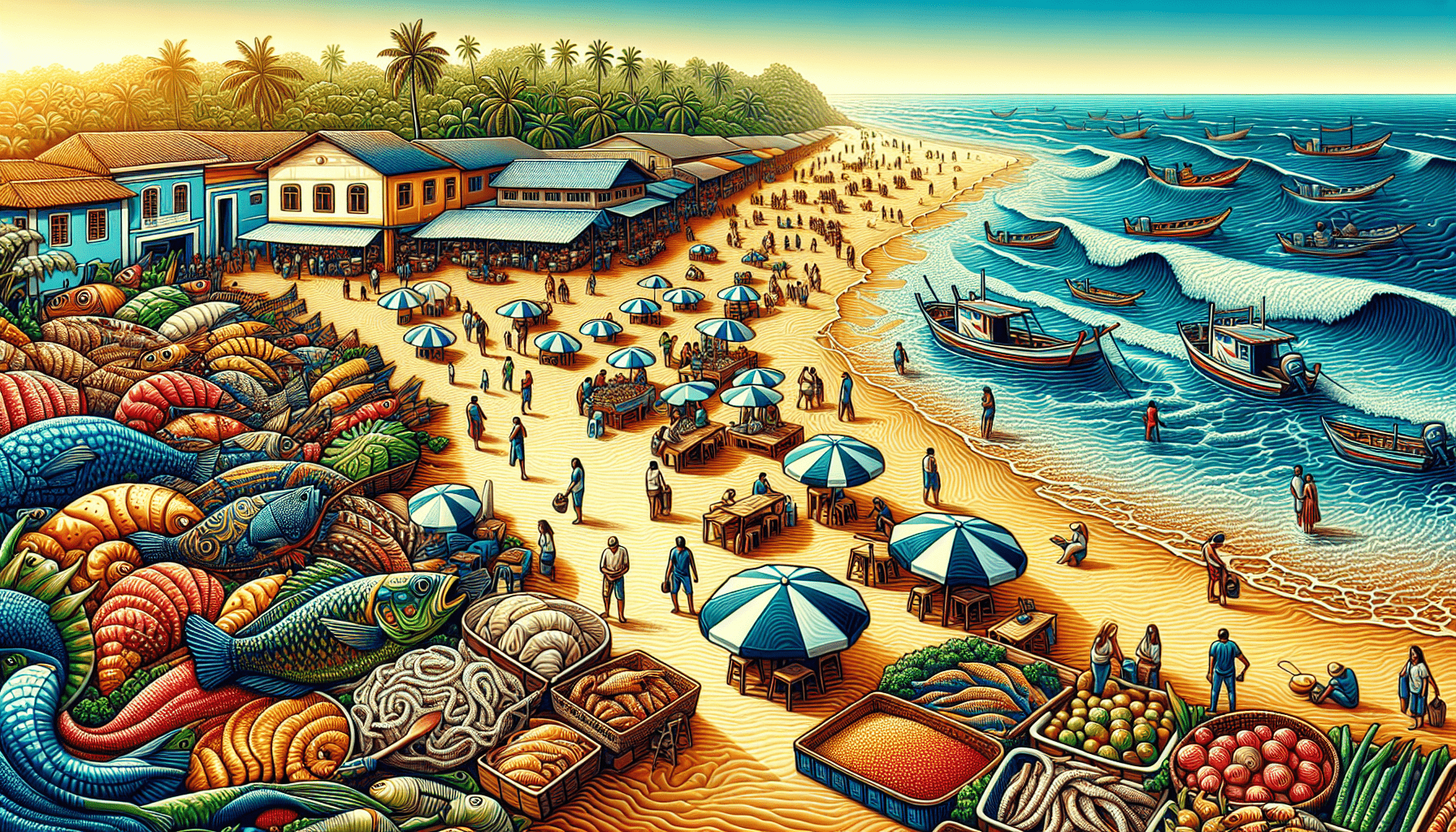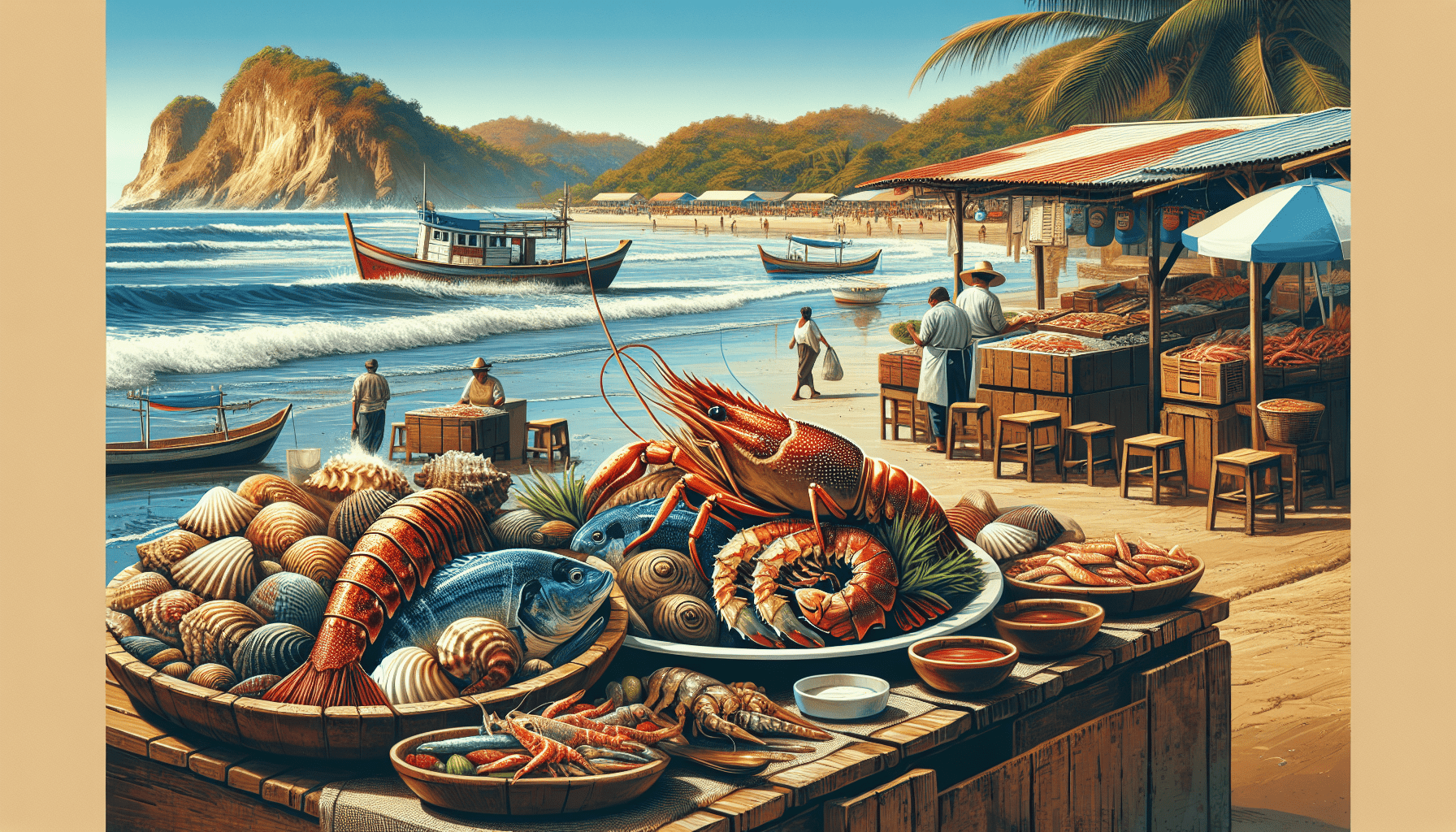If you’re a seafood lover planning a trip to the beautiful coastal areas of Nicaragua, you may be wondering if you can find information on local seafood markets to indulge in the freshest catches of the region. Luckily, Nicaragua is home to a thriving fishing industry, and in this article, we’ll explore the abundance of options available to help you discover the best seafood markets near the coastal areas of Nicaragua. From bustling fishmonger stalls to hidden gems tucked away in charming fishing villages, get ready to embark on a culinary adventure that will have your taste buds dancing with delight. Yes, you can definitely find information on local seafood markets near coastal areas in Nicaragua. Nicaragua is blessed with a beautiful coastline along the Caribbean Sea to the east and the Pacific Ocean to the west. These coastal areas are not only picturesque but also offer a wide variety of fresh and delicious seafood options. In this article, we will provide you with a comprehensive overview of Nicaragua’s coastal areas, the types of seafood found there, the benefits of buying seafood from local markets, and tips for navigating these markets.
Geographical Location of Nicaragua’s Coastal Areas
Nicaragua’s coastal areas span across both the Caribbean Sea and the Pacific Ocean. On the country’s east coast, you will find a stretch of coastline known as the Mosquito Coast, which offers a unique blend of Afro-Caribbean and indigenous cultures. On the west coast, you will find popular tourist destinations such as San Juan del Sur and the Corn Islands. These coastal areas are known for their pristine beaches, vibrant marine life, and rich cultural heritage.
Importance of Seafood in Nicaraguan Cuisine
Seafood plays a fundamental role in Nicaraguan cuisine. The country’s numerous lakes, lagoons, and rivers, in addition to its extensive coastline, provide a diverse range of seafood options. Traditional Nicaraguan dishes often feature fish, shrimp, lobster, crab, and other seafood as key ingredients. From hearty ceviche to flavorful fish stews, seafood is a prominent component of Nicaraguan culinary traditions.

Role of Local Seafood Markets in Coastal Communities
Local seafood markets are the lifeblood of coastal communities in Nicaragua. These markets serve as gathering places for both locals and visitors, offering an opportunity to not only buy fresh seafood but also interact with fishermen and learn about their way of life. Seafood markets provide economic support to local fishermen and their families, promoting sustainable livelihoods and preserving cultural heritage. Additionally, these markets contribute to the overall vibrancy and charm of coastal towns and villages.
Types of Seafood Found in Nicaragua
Nicaragua boasts a wide array of seafood options due to its diverse aquatic ecosystems. Whether you’re a fan of fish, shellfish, or crustaceans, you’ll find plenty of delectable choices to satisfy your seafood cravings.
Variety of Fish Species
Nicaragua’s coastal waters are home to an extensive range of fish species. From the sought-after red snapper and grouper to the flavorful mahi-mahi and snook, the variety is truly impressive. Whether you prefer pan-fried, grilled, or baked fish, you’ll find the perfect catch to suit your taste buds.
Shellfish and Crustaceans
Shellfish lovers will be delighted by the availability of shrimp, lobster, and crab in Nicaragua. These succulent delicacies can be enjoyed in various forms, whether in soups, stir-fries, or simply grilled to perfection. The sweet and tender meat of Nicaraguan shrimp, in particular, is a must-try for seafood enthusiasts.
Other Seafood Options
In addition to fish, shellfish, and crustaceans, Nicaragua’s coastal areas offer a myriad of other seafood options. This includes octopus, squid, and a variety of mollusks such as clams and mussels. These ingredients are often featured in traditional dishes and are also popular choices for homemade meals.

Benefits of Buying Seafood from Local Markets
When it comes to seafood, buying from local markets in Nicaragua holds numerous advantages. Let’s explore some of these benefits.
Freshness and Quality
One of the primary advantages of purchasing seafood from local markets is the guarantee of freshness and quality. Since the seafood is sourced locally, you can be assured that it hasn’t traveled long distances to reach your plate. The proximity of the markets to the fishing communities ensures that the seafood is caught and delivered in a timely manner, ensuring optimal freshness and flavor.
Supporting Local Fishermen and Economy
By buying seafood from local markets, you directly support the livelihoods of Nicaraguan fishermen and their families. These hard-working individuals rely on the seafood industry to sustain themselves and their communities. Purchasing from local markets helps create a sustainable market demand and contributes to the economic growth and stability of coastal regions.
Cultural Experience
Visiting local seafood markets in Nicaragua is not just about buying food; it’s also an opportunity to immerse yourself in the local culture. These markets are bustling hubs of activity, offering a chance to interact with vendors, listen to stories from fishermen, and gain insights into the region’s traditions and way of life. It’s a unique cultural experience that shouldn’t be missed.
Finding Local Seafood Markets in Nicaragua
If you’re eager to explore the seafood markets in Nicaragua, there are several ways to find them.
Online Resources and Directories
The internet is a valuable tool for locating local seafood markets. Numerous websites and directories provide information on markets, their locations, and operating hours. Some online resources also offer reviews and ratings to help you make informed decisions about which markets to visit.
Asking Locals and Tourist Information Centers
To get the most authentic and up-to-date information, asking locals for recommendations is highly recommended. Nicaraguans are known for their warmth and friendliness, and they will be more than happy to guide you to the best seafood markets in their area. Additionally, tourist information centers can provide valuable assistance in finding local markets and may offer brochures or maps highlighting the top seafood destinations.
Exploring Coastal Towns and Villages
Another exciting way to discover local seafood markets is to explore the coastal towns and villages themselves. As you stroll along the streets, you’re bound to stumble upon bustling marketplaces where vendors proudly display their seafood catches. This spontaneous adventure allows for spontaneous interactions and unexpected culinary discoveries.

Top Seafood Markets near Coastal Areas in Nicaragua
Nicaragua’s coastal areas boast several renowned seafood markets that are worth a visit. Let’s take a closer look at some of the top markets.
Market A: Location, Description, and Specialties
Market A, located in the coastal town of XYZ, is a vibrant and bustling market that offers a wide variety of seafood options. The market is known for its fresh fish, particularly red snapper and mahi-mahi, which are sourced directly from local fishermen. Additionally, you’ll find a range of shellfish, including shrimp and crab. The market’s friendly vendors are always ready to help you select the best seafood for your needs.
Market B: Location, Description, and Specialties
Head over to Market B, situated in the charming village of ABC, if you’re looking for an authentic seafood market experience. This market is known for its welcoming atmosphere and a wide selection of seafood delicacies. In addition to an array of fish options, Market B specializes in lobster dishes that are sure to tantalize your taste buds. Don’t forget to engage in friendly conversations with the vendors, who can provide valuable insights into the local fishing practices.
Market C: Location, Description, and Specialties
Market C, nestled in the coastal city of XYZ, is a popular seafood destination among locals and tourists alike. This bustling market offers an impressive variety of seafood, including both native and imported options. Freshly caught shrimps, flavorful octopus, and a range of fish species can be found here. The market also features a section dedicated to local spices and condiments that perfectly complement seafood dishes. Be sure to explore this market for a truly authentic culinary experience.
Tips for Navigating Local Seafood Markets
Once you’ve found your way to a local seafood market, here are some tips to enhance your experience:
Arriving Early for the Best Selection
Seafood markets tend to be busiest in the morning when the freshest catches are laid out for display. To secure the best selection, it’s advisable to arrive early. This way, you can choose from an abundance of fresh seafood and have first pick of the day’s catch.
Interacting with Vendors and Negotiating Prices
Engaging with the vendors at local seafood markets is not only enjoyable but also an opportunity to negotiate prices. Strike up friendly conversations, express your interest in their products, and don’t hesitate to ask for recommendations or cooking tips. Building rapport may also open doors to discounts or special deals.
Ensuring Seafood Freshness and Quality
While local seafood markets generally offer fresh and high-quality products, it’s wise to double-check before purchasing. Look for signs of freshness, such as shiny scales and clear eyes for fish, and avoid seafood that appears spoiled or has a strong odor. Additionally, feel free to ask vendors about the catch’s origin and how recently it was brought to the market.

Exploring Local Seafood Dishes and Recipes
After your visit to the seafood market, it’s time to explore the culinary wonders of Nicaraguan seafood. The country boasts a rich culinary heritage with a variety of traditional seafood dishes.
Traditional Nicaraguan Seafood Dishes
Indulge in the flavors of Nicaragua’s traditional seafood dishes, such as “Sopa de Mariscos” (seafood soup) and “Vigorón” (a dish featuring yuca, pork rinds, and cabbage topped with pickled vegetables and fried fish). These dishes highlight the country’s unique blend of indigenous, Afro-Caribbean, and Spanish influences.
Popular Seafood Recipes to Try at Home
If you enjoy cooking, bring the flavors of Nicaragua into your kitchen by trying popular seafood recipes from the region. Experiment with dishes like “Camarones al Ajillo” (garlic shrimp), “Pescado a la Plancha” (grilled fish), or “Langostas con Arroz” (lobster with rice). These recipes allow you to recreate the vibrant flavors of Nicaraguan cuisine and share them with family and friends.
Sustainable Seafood Practices in Nicaragua
Sustainable fishing practices are crucial for preserving the rich marine ecosystems of Nicaragua’s coastal areas. The government, alongside local fishing communities, has been taking steps to promote responsible fishing techniques and ensure the long-term viability of seafood resources.
Overview of Sustainable Fishing Methods
In recent years, there has been a shift towards using more sustainable fishing methods in Nicaragua. These include implementing size limits, protected areas, and seasonal fishing closures to allow fish populations to replenish. The use of selective gear and fishing techniques that minimize bycatch is also encouraged.
Certifications and Labels to Look For
When purchasing seafood, look for certifications and labels that indicate sustainable fishing practices. Labels such as the Marine Stewardship Council (MSC) and the Aquaculture Stewardship Council (ASC) signify that the product has been sourced from well-managed fisheries or responsibly farmed sources. By choosing certified seafood, you can actively support sustainable initiatives and contribute to the conservation of marine biodiversity.
Supporting Environmentally-Friendly Initiatives
Beyond choosing sustainable seafood, you can also support various organizations and initiatives that work towards protecting Nicaragua’s marine ecosystems. These include marine conservation programs, beach and coastal cleanups, and sustainable tourism initiatives. By participating in or contributing to these efforts, you can play a role in preserving the beauty and abundance of Nicaragua’s coastal areas.

Safety and Hygiene Considerations
To fully enjoy your seafood experience in Nicaragua, it’s important to prioritize safety and hygiene. Here are some key considerations:
Ensuring Proper Storage and Handling of Seafood
To maintain the freshness and quality of your seafood, ensure that it is properly stored and handled. When purchasing, choose seafood that has been kept on ice to maintain its temperature. When transporting seafood, keep it cool and separate from other food items to avoid cross-contamination.
Avoiding Seafood-Related Illnesses
While seafood is delicious, it’s important to be aware of the potential risks associated with consuming raw or undercooked seafood. To minimize the chance of foodborne illnesses, it’s best to cook seafood thoroughly before consumption. To further reduce the risk of contamination, pay attention to the cleanliness and hygiene practices of the seafood markets you visit.
Understanding Local Health and Safety Regulations
Before indulging in seafood in Nicaragua, familiarize yourself with the local health and safety regulations. This includes being aware of any restrictions or guidelines regarding specific seafood species, as well as checking for any travel advisories or warnings related to seafood consumption in certain areas. By staying informed, you can ensure a safe and enjoyable seafood experience.
Conclusion
In conclusion, Nicaragua’s coastal areas offer a treasure trove of seafood delights waiting to be explored. Whether you’re a seafood enthusiast or simply curious about the local cuisine, the country’s seafood markets are a must-visit. From vibrant fish markets to lively coastal communities, these markets provide not only the freshest seafood options but also an enriching cultural experience. By supporting local fishermen and embracing sustainable practices, you can contribute to the preservation of Nicaragua’s coastal ecosystems and help create a brighter future for these vibrant communities. So, pack your bags, embark on a culinary adventure, and discover the bounties of Nicaragua’s coastal seafood markets.
